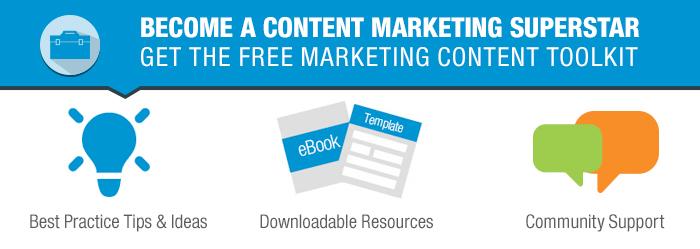Content Marketing World, probably the world’s premier event for content marketers, was held September 8–11 in Cleveland. Did you miss it? Me too. But Carmen Hill was there, and she wrote about what she heard and saw in a LinkedIn post. We really liked what we read (it resonates with one of our recent posts, Simple is a Strategy), and we asked Carmen for permission to reprint her post here.
With 3,500 attendees, more than 200 speakers and sessions, and approximately one bazillion tweets in the #CMWorld stream, there are too many takeaways from Content Marketing World to count. But my biggest Content Marketing World takeaway has nothing to do with content and everything to do with me—with us—and the choices we make as a content strategists and marketers.
The Content Marketing Institute/MarketingProfs 2016 Benchmark study, previewed at the conference, reveals that 76% of B2B marketers plan to produce more content in 2016, and 51% plan to spend more on content marketing. And we’re not exactly starting from zero.
There are proven benefits to doing more. But when content quality hits what Jay Acunzo calls “the crapping point,” that point of diminishing return when trying to do everything means doing nothing well, it’s time to take a step back and make better choices.
There is power in saying no.
 Keynote speaker Kristina Halvorson said she was not at Content Marketing World to tell us that that content marketing doesn’t matter. But she said content strategy must focus on two things: business outcomes and customer satisfaction. “That is all there is in marketing,” she said. Content strategy is about choosing a path. “Stop doing a lot of little things, and you’ll see an impact in the things you do.”
Keynote speaker Kristina Halvorson said she was not at Content Marketing World to tell us that that content marketing doesn’t matter. But she said content strategy must focus on two things: business outcomes and customer satisfaction. “That is all there is in marketing,” she said. Content strategy is about choosing a path. “Stop doing a lot of little things, and you’ll see an impact in the things you do.”
And that impact is measurable, not just in quick wins and ROI, but in value over time. Robert Rose said, “Start with your goals in mind and work backward to understand what measures could define your goals. Develop your plan with these goals in order of priority but with the vision in mind.” Because “if content marketing is just more collateral to support campaign marketing, you’ll ultimately fail at both.”
What won’t you do?
One of the biggest takeaways from last year’s conference was that the organizations with the most effective content marketing programs are those that have a documented content marketing strategy. This year, Michael Brenner and Doug Kessler led a workshop that gave attendees a chance to learn exactly what that looks like.
Michael said it’s not enough to simply have a content strategy. “You either have it written down or you don’t have it.” And Doug said documenting what you’re NOT trying to do is as important as documenting what you ARE trying to do.
When Cleve Gibbon, CTO at Cognifide, asked who in the audience was busy, nearly everyone raised their hand. But of “busy-ness,” he said, “You’re only busy if you fail to prioritize. And you can’t prioritize if you haven’t planned. Find your space to plan.”
Create a space for creative thinking.
That also means saying no. No to busy work. No to distractions. No to everything except the problem at hand. Keynote speaker John Cleese (yes, that John Cleese) said to tap into your creative unconscious, you have to set boundaries of time and space.
Referencing the work of cognitive psychologist Guy Claxton and his book, “Hare Brain, Tortoise Mind: How Intelligence Increases When You Think Less,” Cleese said we need to step away from our quick thinking, logical brain and into our “tortoise enclosure” where we can let our minds wander and take the time to come up with our best ideas. “Don’t make a decision until you have to,” he said. “You might get more info or have a better idea before then.”
Deciding what not to do.
We can’t do everything. We can’t target every audience. We can’t consistently publish in every channel. We can’t master every tool. And even if time, budget and resources were not a consideration (and is there really any organization of any size that can say that?), not everything is worth doing. Not everything that seems like a good idea will actually support business outcomes and customer satisfaction.
As we come away from Content Marketing World with brains full of new ideas for what we’ll do in 2016, we might also consider the things we will not do. And focus on making every idea count.
So, what will not be in your 2016 content marketing plan?
* * *
Want to explore more possibilities in content strategy and content marketing? Check out Act-On’s free Toolkit:



